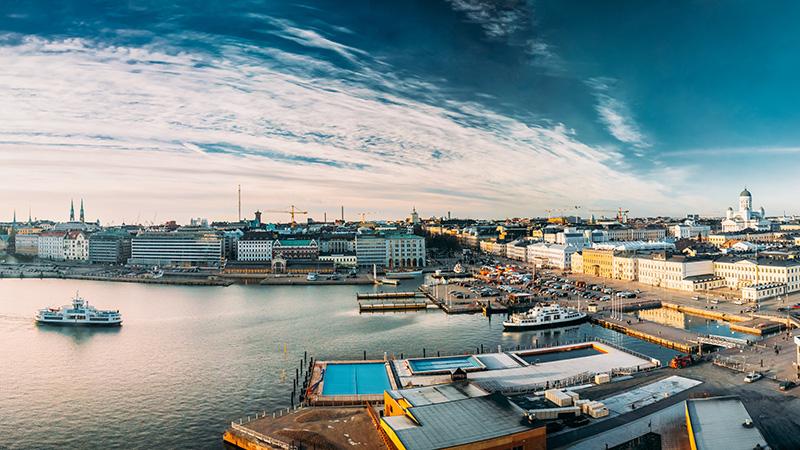Vaisala’s technology and air quality know-how will help cities become smarter and cleaner
Vaisala is a project partner in the CITYZER project. The project develops new digital services and products to support decision-making processes related to weather and air quality in cities, answering to the increasing challenges that poor air quality poses globally. The results of the project are utilized in the Helsinki and Nanjing Air Quality Testbeds.
In urban areas, air quality varies significantly even in very small areas due to weather, emissions, and traffic flows, for example. In order to improve the air quality, we need data that is local, easily targeted, as well as helps to tackle the issues and improve the quality of life.
In Nanjing and in Helsinki, Vaisala’s air quality monitoring networks help to compile comprehensive information about air quality, as each sensor delivers data from different parts of the city. The networks use Vaisala's innovative AQT400 series transmitters, which measure the most important air pollutants. They can also be connected to Vaisala's weather measurement equipment and different air quality modeling systems, improving the reliability of real-time air quality measurements and forecasts significantly. The combination provides invaluable new insight into air pollution and its movements.
Various air quality projects in Helsinki
Vaisala is part of the Helsinki Metropolitan Air Quality Testbed (HAQT) project, which aims to offer local air quality data for the Helsinki Metropolitan area. HAQT is a joint project, funded by the Helsinki-Uusimaa Regional Council, and in addition to Vaisala, the partners include Finnish Meteorological Institute, the University of Helsinki, the Helsinki Region Environmental Services Authority HSY, as well as Pegasor Oy. HAQT belongs also to the project portfolio of the Helsinki Metropolitan Smart & Clean Foundation. The fixed-term Foundation functions during 2016–2021, driving the change towards a more sustainable and prosperous future.
The network in the Helsinki Metropolitan area constitutes the world’s first comprehensive city-wide air quality network for operational use, and the installation was completed in 2018. The new network supplements the previous measurement stations placed around the city. The data and results are then used to develop new, innovative applications as well as to create a basis for more efficient decision-making for better air quality and ultimately better quality of life.
Finnish Meteorological Institute (FMI) has the initiative lead and is also responsible for creating the predictive model from the results. FMI’s ENFUSER air quality model is now in use: this real-time model and air quality forecast is open for everyone on HYS’s website as well as on the streetcar screens in Helsinki, for instance.
Also a new three-year air quality project HOPE (Healthy Outdoor Premises for Everyone) has started in Helsinki, funded by EU’s Urban Innovative Actions program. In the project, the University of Helsinki is developing the use of 5G network, air quality monitoring on an individual basis, as well as a new air quality index. The aim of the new index is to take into account even more variables that help gather more accurate information on actual air quality. Vaisala participates in the project for example by building a dense air quality and environmental observation network in Jätkäsaari. In addition to Vaisala, the City of Helsinki, Forum Virium Helsinki, HSY, Useless, and FMI participate in HOPE.
Nanjing as an excellent environment for air quality pilot
In 2018 Vaisala, the University of Helsinki, the University of Nanjing, and FMI continued building a dense air quality monitoring network in the mega city of Nanjing and the Yangtze River Delta. The project is scheduled for 2017–2020, and its main goal is to pilot a groundbreaking air quality pollution monitoring concept.
The construction work of the monitoring network started in June 2018, and it is estimated to be completed in the summer of 2019. The first version of the ENFUSER air quality model, provided by FMI, is already in use, and the model becomes more and more accurate as the installations progress.
Eventually, the results from this project can be used in improving air quality. For example, information will be provided for the research of air pollution phenomena in order to better understand the chemical and physical processes of air quality formation and dispersion. The goal is to provide citizens with relevant information on the pollution levels in their neighborhood or route to work, for example through mobile applications.
Nanjing is an excellent choice for the new pilot network, since it is inhabited by over six million people and located in one of China’s most industrialized areas. Nanjing is also one of the most important centers for meteorological research in China, with long traditions in the University of Nanjing.
